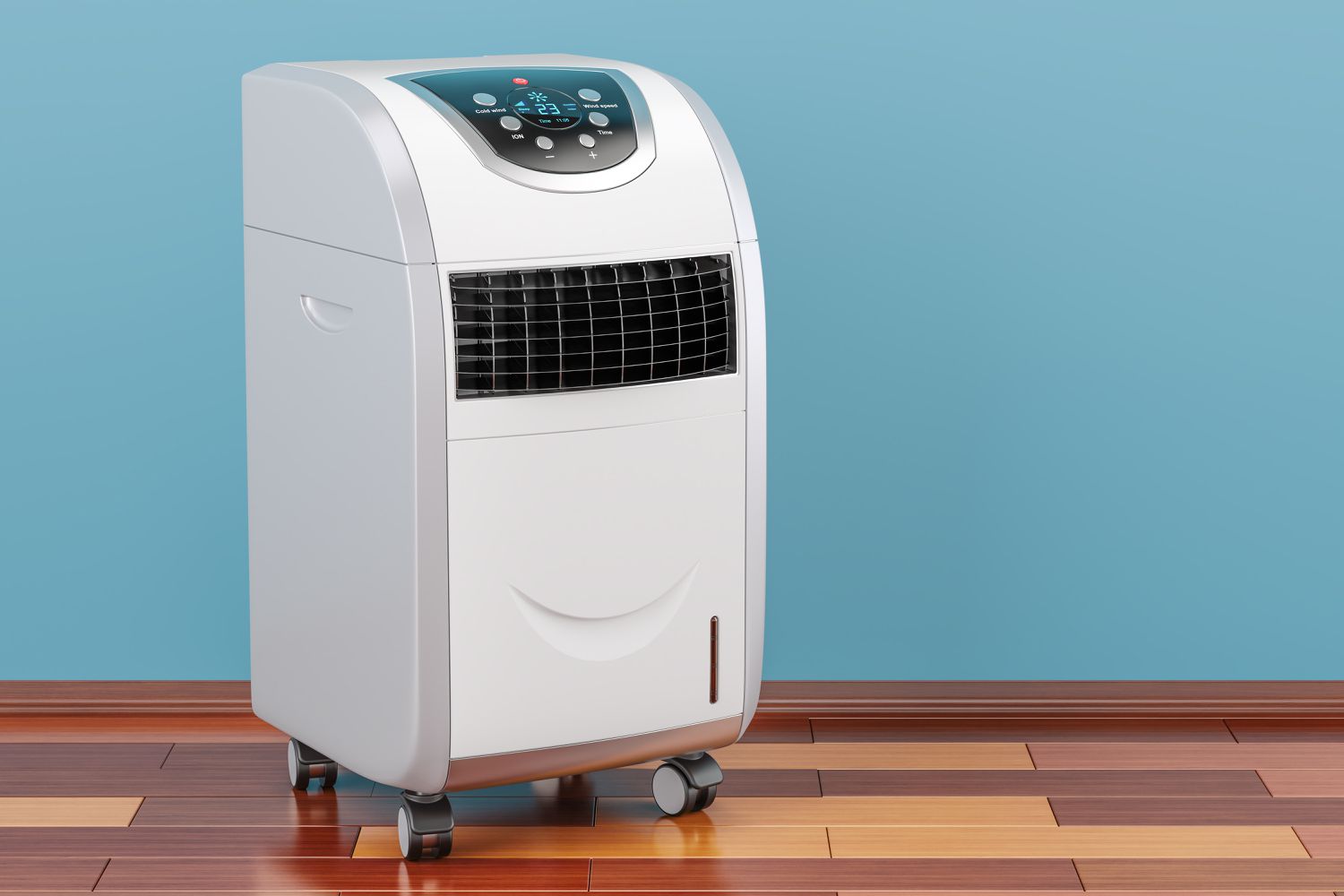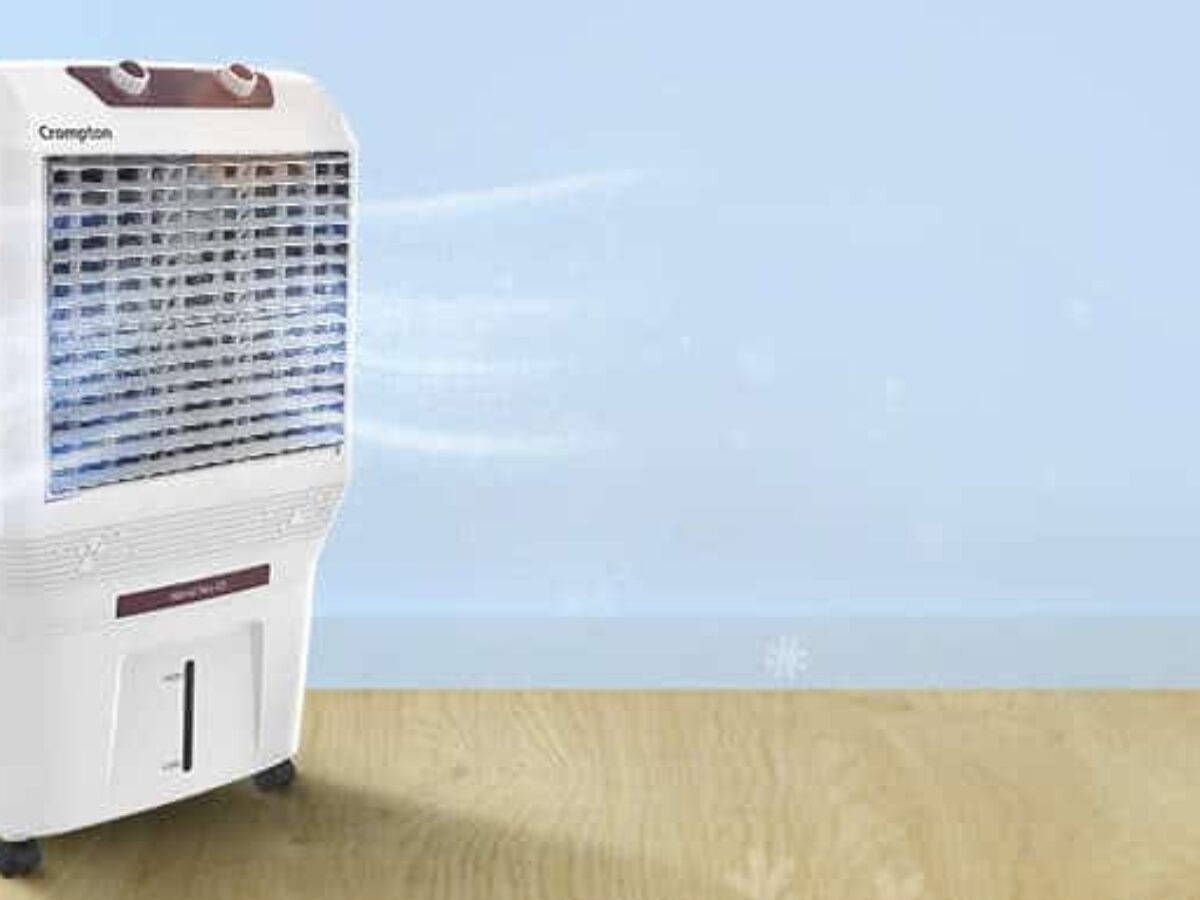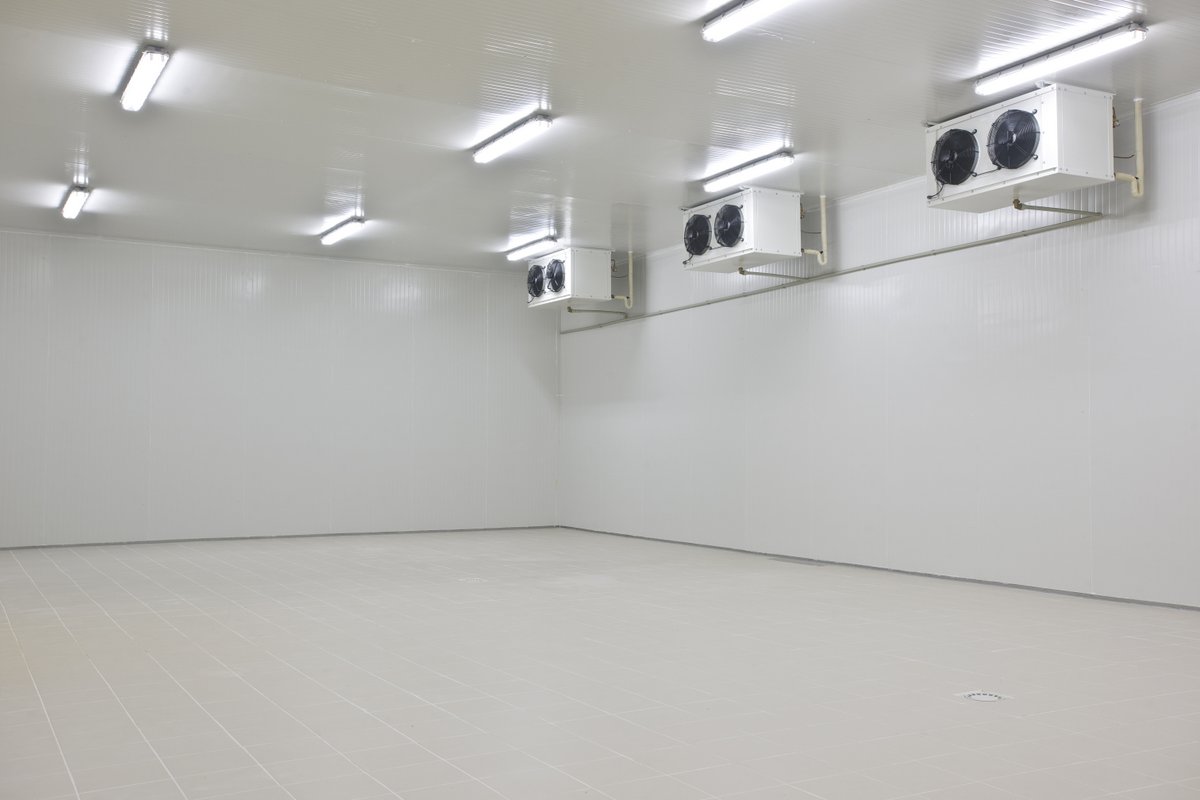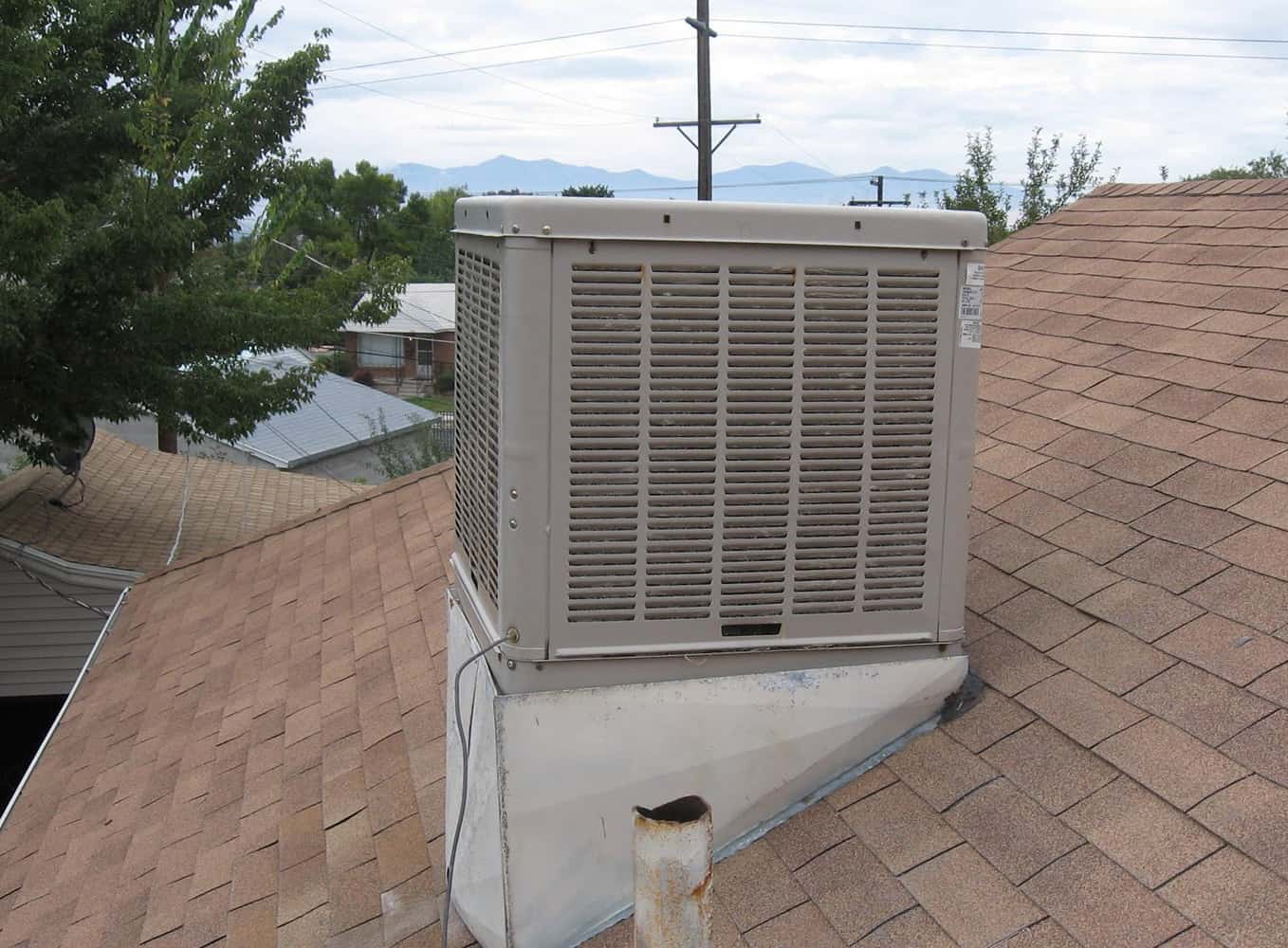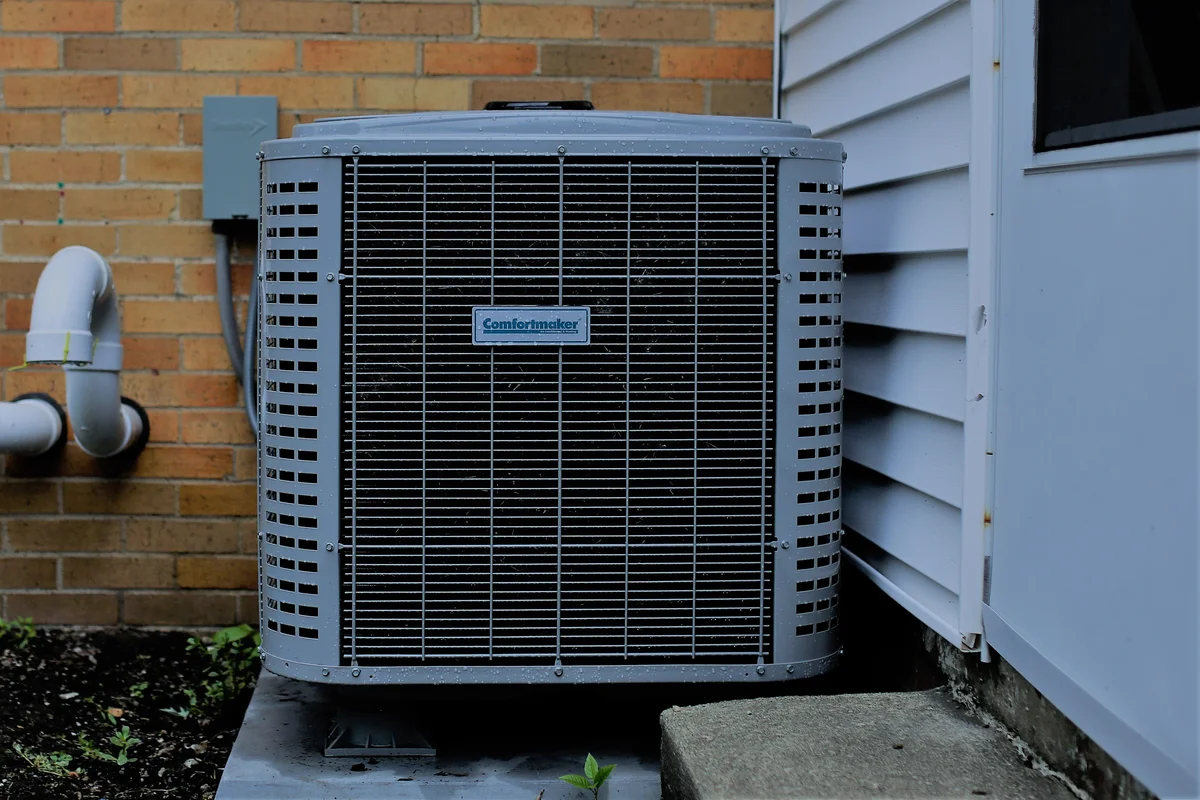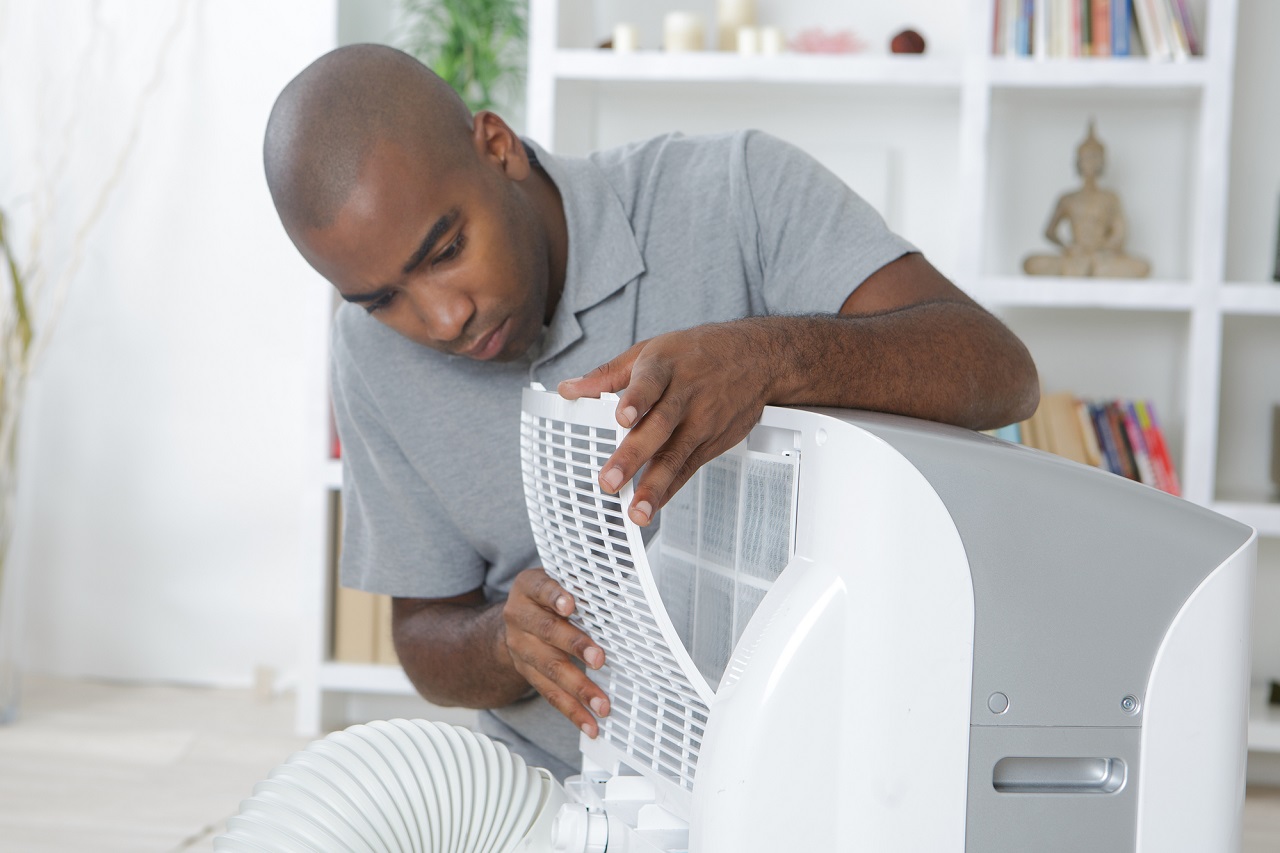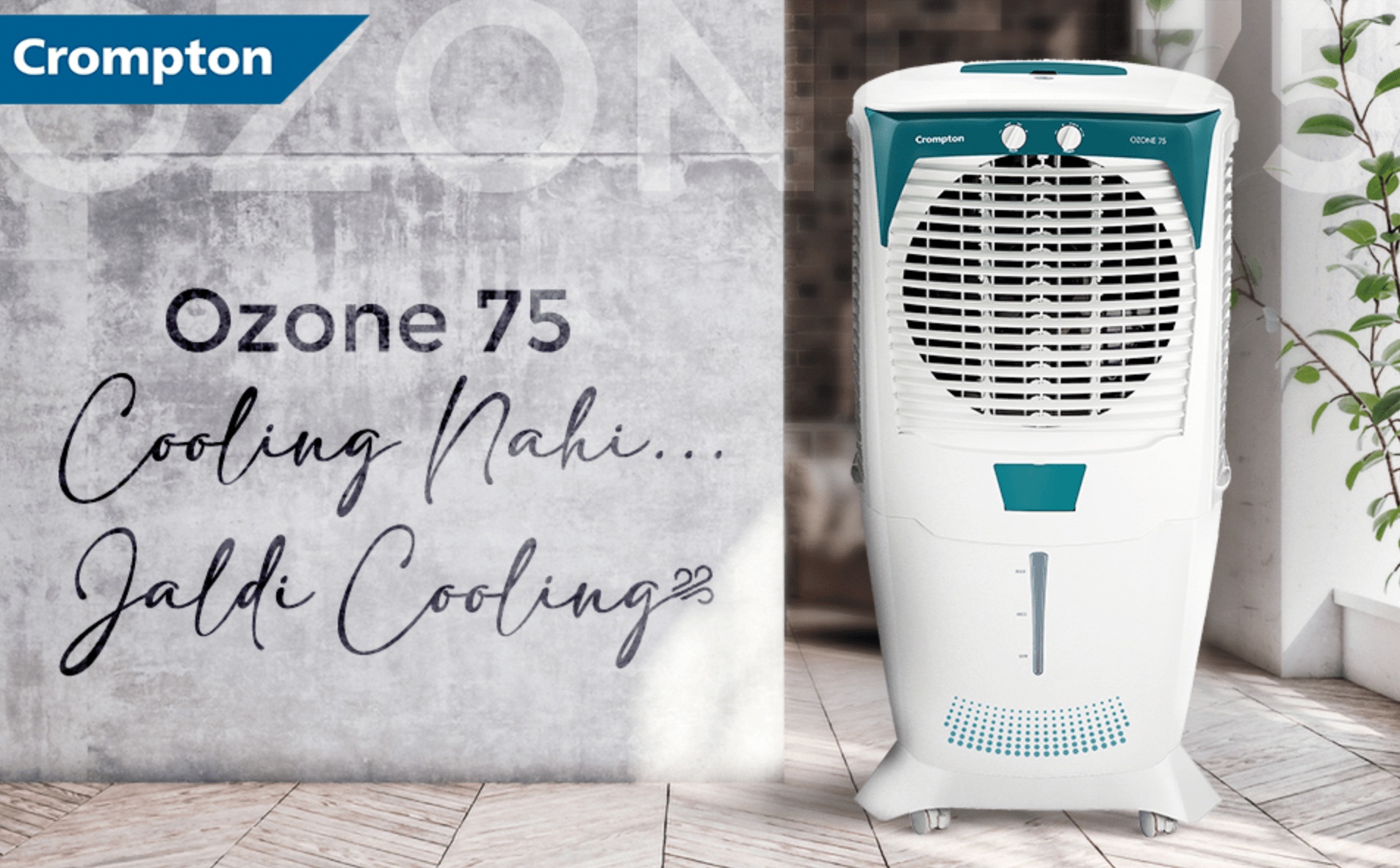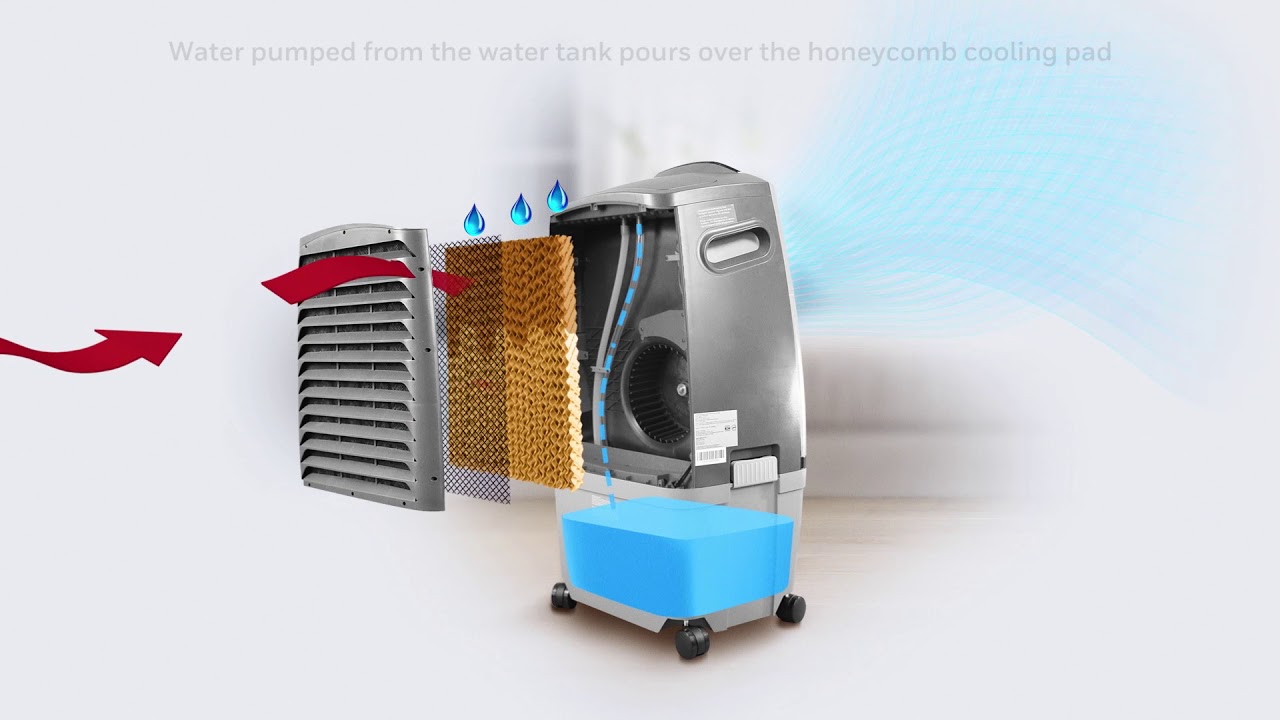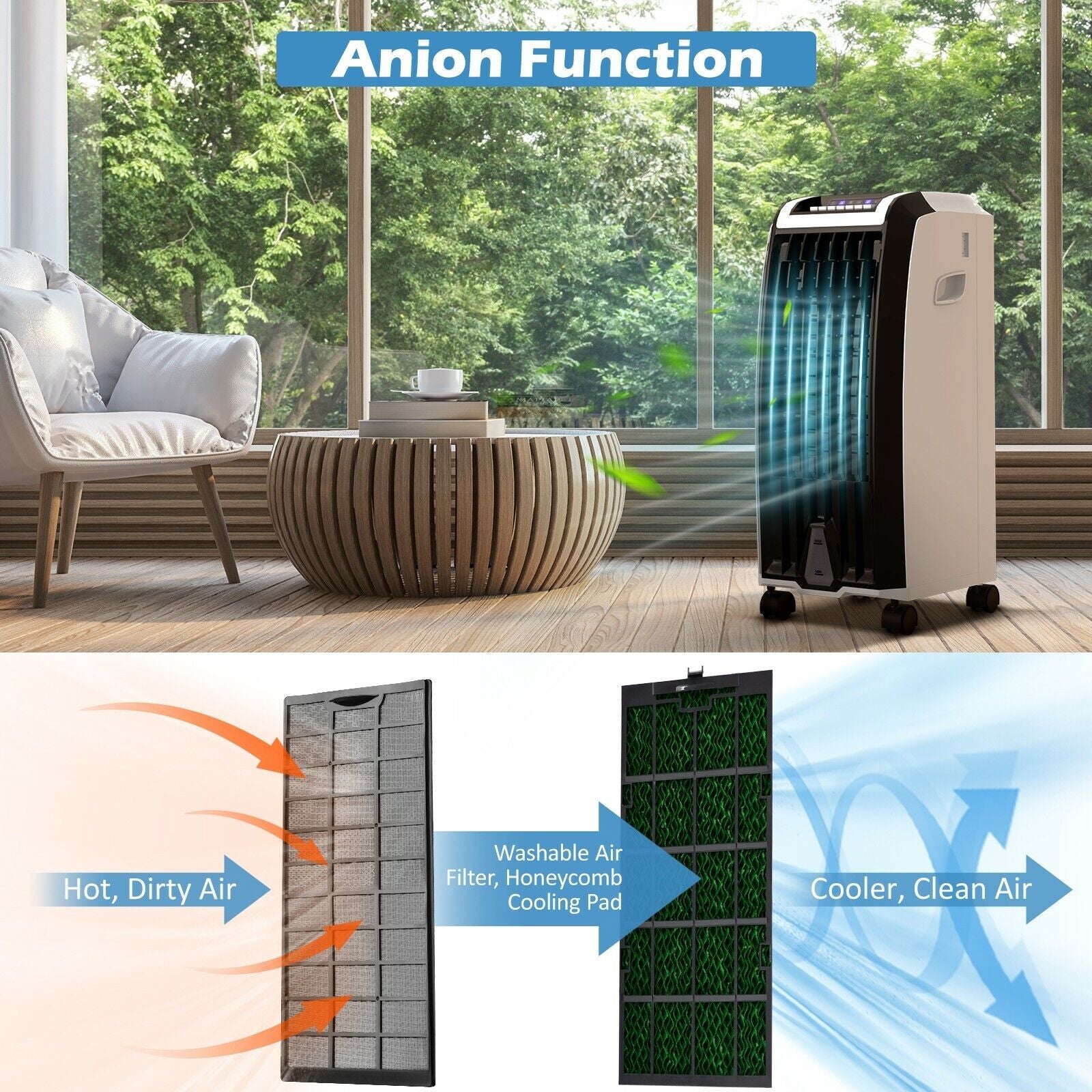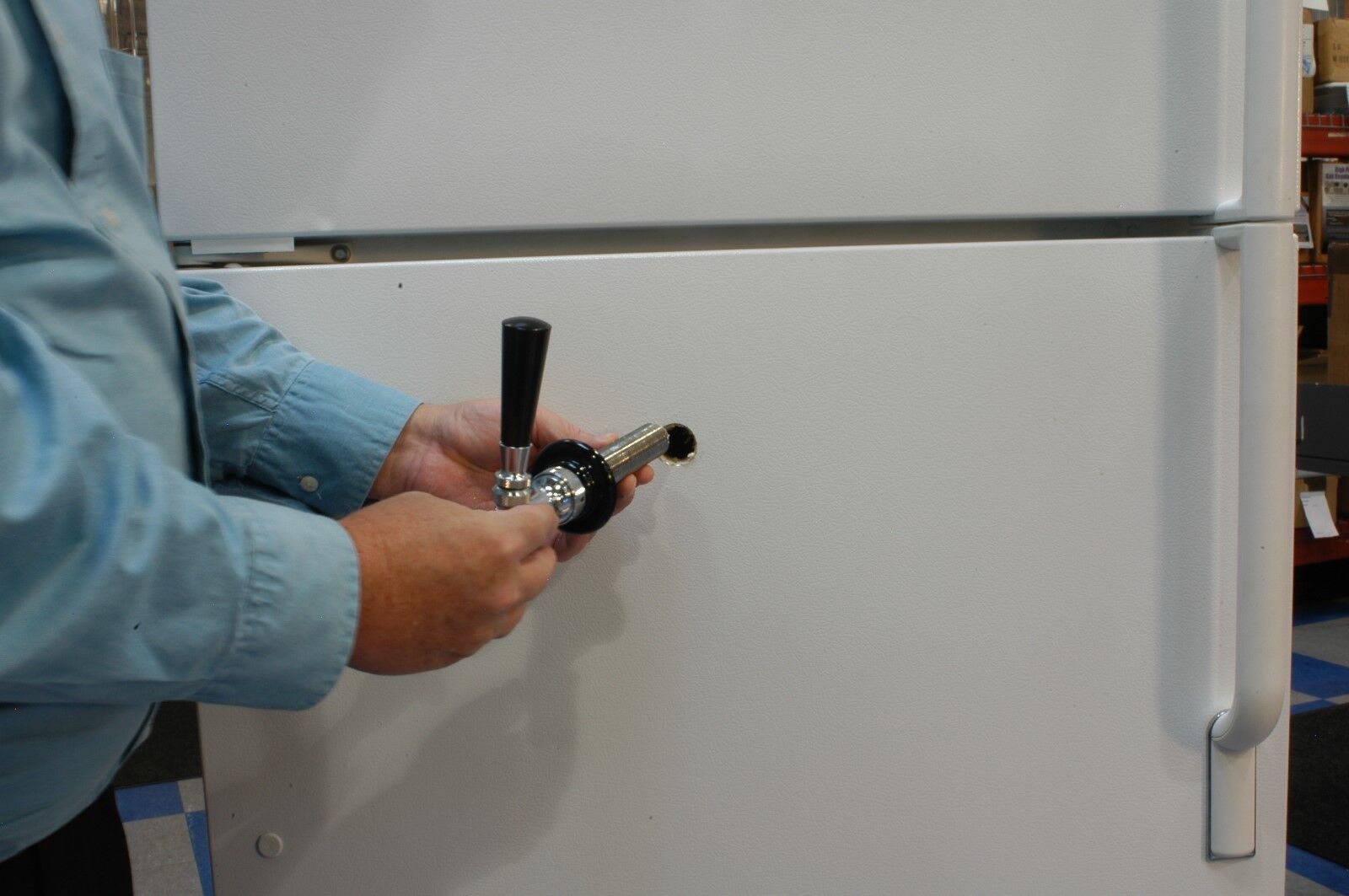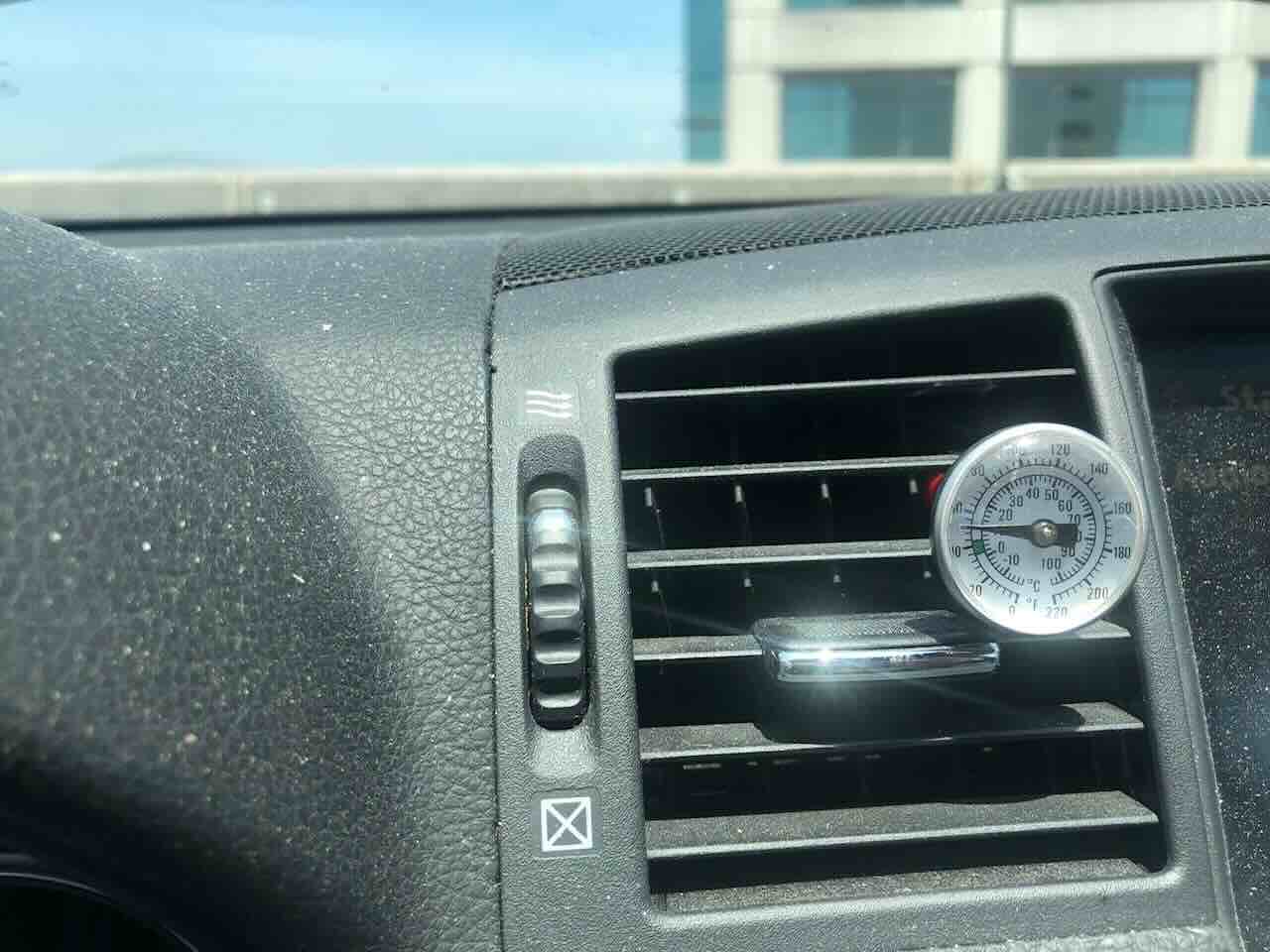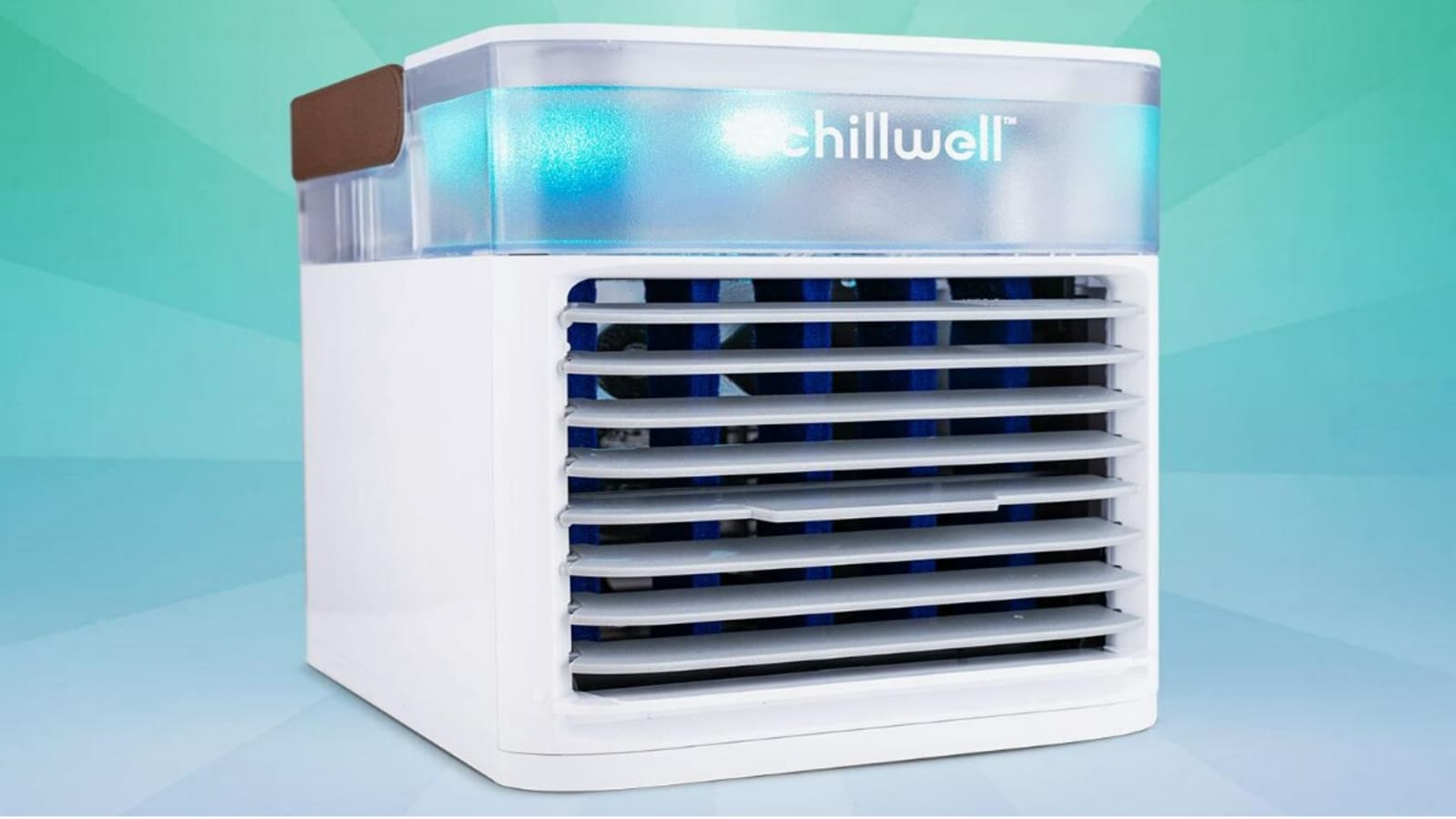Home>Home Maintenance>How To Make A Walk-In Cooler With An Air Conditioner
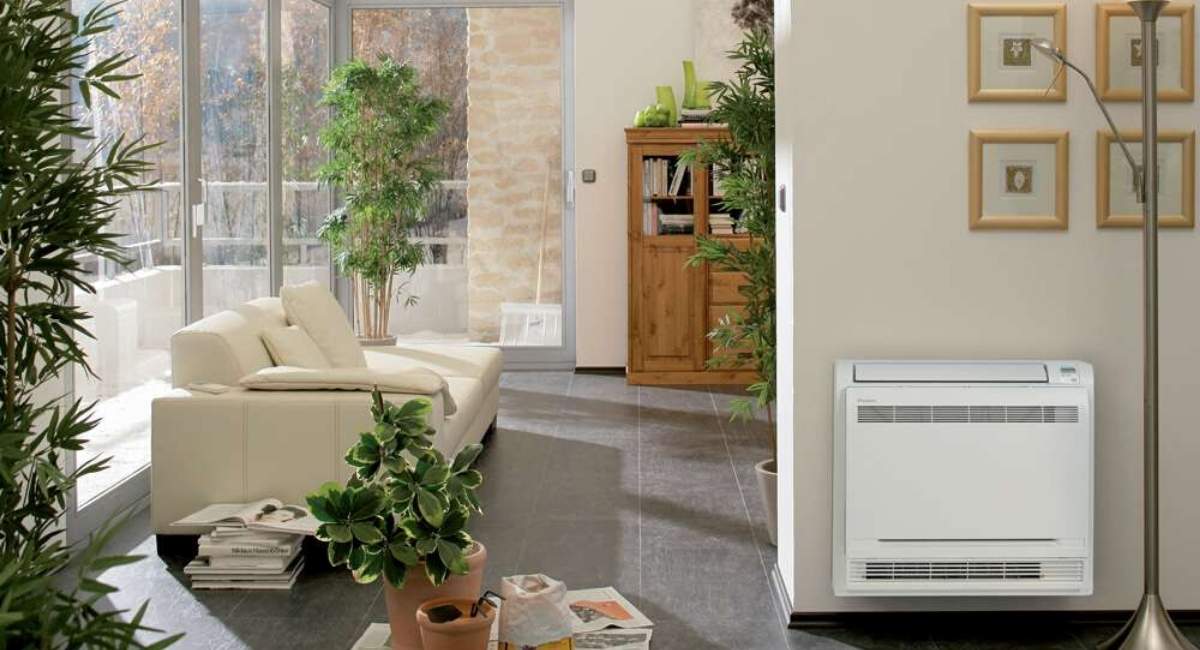

Home Maintenance
How To Make A Walk-In Cooler With An Air Conditioner
Modified: October 20, 2024
Learn how to create a walk-in cooler using an air conditioner. Perfect for home maintenance projects.
(Many of the links in this article redirect to a specific reviewed product. Your purchase of these products through affiliate links helps to generate commission for Storables.com, at no extra cost. Learn more)
How To Make A Walk-In Cooler With an Air Conditioner
Introduction
Are you tired of struggling to keep your perishable goods fresh in hot weather? Do you dream of having your own walk-in cooler to store fruits, vegetables, and other temperature-sensitive items? Look no further! In this article, we will guide you through the process of making a walk-in cooler using an air conditioner, allowing you to maintain the perfect temperature for your goods.
Before we dive into the details, it’s important to note that this DIY project requires some basic knowledge of carpentry and electrical work. If you are not comfortable with these skills, it may be best to hire a professional to assist you. Safety should always be a top priority!
Now, let’s gather our materials and get started on creating your very own walk-in cooler!
Key Takeaways:
- Create your own walk-in cooler with an air conditioner to keep perishable goods fresh. Follow safety guidelines and carefully plan the construction for optimal results.
- Choose the right location, measure and plan carefully, and ensure proper insulation and sealing for a functional and efficient walk-in cooler.
Read more: How To Make Air Cooler
Materials Needed
Before starting the project, make sure you have the following materials:
- Room air conditioner – choose a unit with enough cooling capacity for the size of your walk-in cooler.
- Insulation panels – these will help regulate the temperature inside the cooler.
- Lumber – for building the frame of the cooler.
- Drywall or plywood – to cover the frame and provide a finished look.
- Sealant – to prevent any air leaks.
- Electrical wiring and outlets – for powering the air conditioner.
- Thermometer – to monitor the temperature inside the cooler.
- Tools – such as a saw, drill, hammer, screwdriver, and measuring tape.
Step 1: Choosing the Right Location
… (continue with the rest of the steps) …
Key Takeaways:
- Create your own walk-in cooler with an air conditioner to keep perishable goods fresh. Follow safety guidelines and carefully plan the construction for optimal results.
- Choose the right location, measure and plan carefully, and ensure proper insulation and sealing for a functional and efficient walk-in cooler.
Read more: How To Make Air Cooler
Materials Needed
Before starting the project, make sure you have the following materials:
- Room air conditioner – choose a unit with enough cooling capacity for the size of your walk-in cooler. Look for Energy Star-certified models that are energy-efficient and environmentally friendly.
- Insulation panels – these will help regulate the temperature inside the cooler. Opt for high-quality insulation panels with good thermal conductivity to ensure maximum efficiency.
- Lumber – you’ll need 2x4s or 2x6s to build the frame of the cooler. Select pressure-treated lumber to protect against moisture and decay.
- Drywall or plywood – to cover the frame and provide a finished look. Drywall is a more common choice for its affordability and ease of installation, but plywood offers durability and resistance to moisture.
- Sealant – to prevent any air leaks and ensure the cooler is properly sealed. Use a high-quality caulking gun and silicone-based sealant for best results.
- Electrical wiring and outlets – for powering the air conditioner. Hire a licensed electrician to install the necessary wiring and outlets to ensure safety and compliance with local building codes.
- Thermometer – to monitor the temperature inside the cooler. Choose a reliable digital thermometer with a temperature range suitable for your needs.
- Tools – gather a variety of tools including a saw, drill, hammer, screwdriver, measuring tape, level, and safety equipment like goggles and gloves.
It’s worth noting that the specific materials you will need may vary depending on the size of your walk-in cooler and the design choices you make. Make sure to carefully plan your project and adjust the quantities and types of materials accordingly.
Additionally, it’s important to prioritize safety when working with electrical wiring and power tools. If you are unsure about any aspect of the project, consult a professional or seek guidance from experienced individuals.
Now that you have all the necessary materials, it’s time to move on to the next step: choosing the right location for your walk-in cooler.
Step 1: Choosing the Right Location
Choosing the right location for your walk-in cooler is crucial for its functionality and efficiency. Here are some key considerations:
- Space: Measure the area where you plan to install the walk-in cooler. Ensure that you have enough space to accommodate the cooler and allow for proper airflow around the unit.
- Electrical Accessibility: Make sure there is a nearby electrical outlet to connect the air conditioner. If needed, hire an electrician to install a dedicated circuit for the cooler.
- Ventilation: Proper ventilation is essential to dissipate the heat generated by the air conditioner. Identify a location near an exterior wall or window to vent the warm air outside. If ventilation is not possible, consider installing an exhaust fan.
- Insulation: Choose an area with good insulation to minimize heat transfer from outside the cooler. Avoid locations with direct sunlight exposure or close proximity to heat sources such as ovens or boilers.
- Accessibility: Consider how easily you can access the walk-in cooler. It should be conveniently located for smooth loading and unloading of goods.
- Drainage: Ensure there is a nearby drain or a floor with proper slope for condensation drainage from the air conditioner.
Once you have assessed these factors, select the most suitable location for your walk-in cooler. It’s recommended to consult a professional if you have any doubts about the feasibility or suitability of a location.
Remember, the location you choose will impact the efficiency and performance of your walk-in cooler. Taking the time to find the ideal spot will ensure optimal conditions for storing your perishable goods.
Now that you have chosen the right location, let’s move on to the next step: measuring and planning!
Read more: What Is an Air Cooler
Step 2: Measuring and Planning
Before you start building your walk-in cooler, it is important to take accurate measurements and create a detailed plan to ensure a successful and well-constructed project. Here’s what you need to do:
- Measure the available space: Use a tape measure to determine the dimensions of the area where you will be building your walk-in cooler. Measure the height, width, and depth of the space to ensure your cooler will fit properly.
- Safety clearances: Consider any safety clearances required by local building codes and regulations. Leave enough space around the cooler to meet these requirements and allow for proper ventilation and access.
- Create a floor plan: Using graph paper or a digital design tool, create a scale drawing of your walk-in cooler. Include the exact measurements and any existing structures or obstacles that may impact the construction process.
- Allocate space for the air conditioner: Determine the ideal location for your air conditioner within the cooler. Consider accessibility for maintenance and cleaning, as well as the manufacturer’s recommendations for installation.
- Plan the layout: Decide on the layout of shelves or storage units within the cooler. Consider the types of items you will be storing and design a configuration that maximizes space and accessibility.
- Consider additional features: If desired, plan for additional features such as lighting, temperature controls, and door placement. These can enhance the functionality and convenience of your walk-in cooler.
By carefully measuring and planning your walk-in cooler, you can ensure that the final construction meets your needs and fits seamlessly into the available space. It is also recommended to consult with a professional or seek advice from experienced individuals to ensure your plans are accurate and aligned with building codes and regulations.
Now that you have measured and planned your walk-in cooler, it’s time to move on to the next step: building the cooler frame!
Make sure to properly insulate the space to prevent cold air from escaping. Use a high-quality, energy-efficient air conditioner to maintain the desired temperature inside the walk-in cooler.
Step 3: Building the Cooler Frame
Now that you have measured and planned your walk-in cooler, it’s time to start building the frame. The frame will provide the structural support for your cooler and serve as the base for the insulation and covering materials. Follow these steps to build the cooler frame:
- Cut the lumber: Using a saw, cut the pressure-treated 2x4s or 2x6s to the appropriate lengths based on your measurements. Take care to make accurate cuts.
- Assemble the frame: Begin by constructing the base of the cooler using the cut lumber. Connect the pieces using screws or nails, ensuring a square and sturdy construction. Then, build the vertical walls, securing them to the base and each other at the corners.
- Add cross supports: To strengthen the frame, add additional horizontal and diagonal cross supports. These will provide stability and prevent the frame from shifting or warping over time.
- Check for level: Once the frame is assembled, use a level to ensure it is plumb and level. Adjust as necessary by adding shims or making small modifications.
- Secure the frame: With the frame complete and level, firmly secure it to the floor using anchors or bolts. This will prevent any movement or shifting during use.
As you build the frame, double-check your measurements and ensure that everything is aligned properly. A sturdy and accurately constructed frame will provide a solid foundation for the rest of your walk-in cooler. If you are not confident in your carpentry skills, it is advisable to seek assistance from a professional or someone experienced in construction.
With the cooler frame complete, you are now ready to move on to the next step: installing insulation!
Step 4: Installing Insulation
Insulation is a crucial component of your walk-in cooler as it helps maintain a consistent temperature inside. Properly installing insulation will ensure that the cooler retains the cold air generated by the air conditioner. Follow these steps to install insulation in your walk-in cooler:
- Measure and cut the insulation panels: Using your measurements from Step 2, measure and cut the insulation panels to fit the walls, floor, and ceiling of the cooler. Use a utility knife or a saw with a fine-tooth blade to make clean and precise cuts.
- Apply adhesive: Apply a suitable adhesive recommended by the manufacturer of the insulation to the back of each panel. This will help the insulation adhere securely to the cooler frame.
- Place the insulation panels: Carefully position the adhesive side of each insulation panel against the corresponding surface of the cooler frame. Press firmly to ensure good adhesion and a tight seal.
- Seal the joints: Use a high-quality sealant, such as silicone-based caulk, to seal any gaps or joints between the insulation panels. Pay close attention to corners, edges, and seams to prevent any air leaks.
- Insulate the door: If your walk-in cooler has a door, make sure to insulate it as well. Use insulation foam or strips specifically designed for doors to provide an airtight seal when the door is closed.
Remember to follow the manufacturer’s instructions for the specific insulation materials you are using. This will ensure proper installation and maximum insulation efficiency.
Insulation plays a crucial role in maintaining the desired temperature inside your walk-in cooler. It helps prevent temperature fluctuations and reduces energy consumption by allowing the air conditioner to work more efficiently. With the insulation installed, it’s time to move on to the next step: installing the air conditioner!
Step 5: Installing the Air Conditioner
Installing the air conditioner is a critical step in creating a functional walk-in cooler. The air conditioner will cool the air inside the cooler and maintain the desired temperature for your perishable goods. Follow these steps to properly install the air conditioner:
- Choose the right spot: Based on your pre-planning in Step 2, identify the designated area within the cooler frame to install the air conditioner. Ensure there is enough space for the unit and proper airflow around it.
- Prepare the opening: Measure and mark the dimensions of the air conditioner on the cooler frame. Use a saw or a router to carefully cut out the opening, following the marked lines.
- Secure the air conditioner: Place the air conditioner unit into the opening you just created. Use brackets or screws to securely attach the unit to the frame. Follow the manufacturer’s instructions for the specific installation requirements of your air conditioner model.
- Connect the electrical supply: Consult a licensed electrician if you are not experienced with electrical work. They will connect the air conditioner to the electrical supply, ensuring it is done safely and meets local electrical codes.
- Seal around the air conditioner: To prevent any air leaks, use sealant or insulation foam to seal the gaps between the air conditioner and the frame. This will ensure proper insulation and temperature control.
Ensure that the air conditioner is installed level and securely. Any gaps or improper installation may result in air leakage, reducing the efficiency of your walk-in cooler. It is always recommended to consult the manufacturer’s instructions for specific installation guidelines and safety precautions.
With the air conditioner properly installed, you are now ready to move on to the next step: sealing and securing the cooler.
Read more: How To Make A Makeshift Air Conditioner
Step 6: Sealing and Securing the Cooler
Sealing and securing the cooler is an important step to ensure optimal performance and energy efficiency. By eliminating any drafts or air leaks, you can maintain a consistent temperature inside the cooler and prevent unwanted heat infiltration. Follow these steps to properly seal and secure your walk-in cooler:
- Seal the gaps: Inspect the joints, corners, and seams of the cooler frame for any gaps or openings. Use a high-quality sealant, such as silicone-based caulk, to fill in these gaps and create an airtight seal. Pay close attention to areas around the door, ventilation, and any electrical or plumbing penetrations.
- Insulate the door: Apply weatherstripping or a door sweep on the edges of the walk-in cooler door. This will create a tight seal when the door is closed, preventing air leakage. Ensure that the door closes properly and securely.
- Check for leaks: After sealing, carefully inspect the cooler for any potential air leaks. Use a smoke pen or a thin piece of tissue paper near the seams, joints, and door to detect any air movement. If you notice any leaks, apply additional sealant or insulation foam to address the issue.
- Secure the cooler: Anchor or screw the cooler frame to the surrounding walls, floor, and ceiling to ensure stability and prevent any movement. Use appropriate hardware for your specific application, following the manufacturer’s guidelines.
- Test the insulation and sealing: Once everything is sealed and secured, run the air conditioner to test the insulation and sealing effectiveness. Monitor the temperature inside the cooler and ensure it remains stable and within the desired range.
Properly sealing and securing your walk-in cooler will minimize energy wastage and ensure that the air conditioner operates efficiently. It will also help maintain the integrity of the temperature-controlled environment, keeping your perishable goods fresh and safe.
With the cooler now sealed and secured, it’s time to move on to the final step: testing and adjusting the temperature!
Step 7: Testing and Adjusting Temperature
Now that you’ve completed the construction and sealing of your walk-in cooler, it’s time to test and adjust the temperature to ensure optimal performance. Follow these steps to test and adjust the temperature in your walk-in cooler:
- Power on the air conditioner: Turn on the air conditioner and allow it to run for a few minutes to reach its full cooling capacity. Make sure the air conditioner is properly connected to the power source and functioning correctly.
- Monitor the temperature: Place a reliable thermometer inside the cooler to monitor the temperature. Allow the cooler to run for several hours to stabilize the temperature and ensure accurate readings.
- Adjust the thermostat: If the temperature is too high or too low, adjust the thermostat on the air conditioner accordingly. Follow the manufacturer’s instructions to set the desired temperature and ensure it remains within the recommended range.
- Check for even cooling: After the temperature stabilizes, check for any temperature variations or hot spots within the cooler. If you notice any uneven cooling, consider repositioning shelving or adding fans to improve air circulation.
- Make adjustments as needed: Regularly monitor the temperature inside the cooler and make adjustments to the thermostat as necessary. Fine-tune the settings to maintain the desired temperature consistently.
It’s important to note that the ideal temperature for your walk-in cooler may vary depending on the specific items you are storing. However, a general guideline is to keep the temperature between 32°F (0°C) and 40°F (4°C) for refrigerated goods, and below 0°F (-18°C) for frozen items.
Remember to periodically check and clean the air conditioner to ensure its proper functioning and to prevent dust or debris buildup that can affect its performance. Additionally, regularly inspect the insulation and sealing for any signs of wear or damage, and address any issues promptly to maintain the cooler’s efficiency.
Congratulations! You have successfully created your own walk-in cooler with an air conditioner. Enjoy the benefits of having a dedicated space to store your perishable goods at the optimal temperature!
If you encounter any difficulties or have concerns about the functionality of your walk-in cooler, it’s recommended to consult a professional for guidance and assistance.
With that, you have completed all the necessary steps. Your walk-in cooler is now ready for use! Enjoy the convenience and peace of mind knowing your perishable items will stay fresh and well-preserved in your homemade walk-in cooler.
Conclusion
Congratulations on successfully creating your very own walk-in cooler with an air conditioner! By following the steps outlined in this guide, you have learned how to turn a designated space into a temperature-controlled environment ideal for storing perishable goods. Whether you’re a home gardener, a small business owner, or someone who simply wants to have better control over their food storage, this DIY project will undoubtedly bring numerous benefits.
Throughout the process, you have learned how to choose the right location for your cooler, measure and plan the construction, build a sturdy frame, install insulation for temperature regulation, and secure the cooler to prevent air leaks. You have also gained the knowledge to properly install and adjust the air conditioner to maintain the desired temperature. Each step has been carefully crafted to guide you towards creating a functional and efficient walk-in cooler.
By creating your own walk-in cooler, you have taken control of your perishable goods and ensured their freshness in even the hottest of weather. You can now confidently store fruits, vegetables, and other temperature-sensitive items without worrying about spoilage or waste. This DIY project not only helps in minimizing food waste but also provides an eco-friendly solution by reducing the need for excessive refrigeration and packaging.
Remember to regularly monitor and maintain your walk-in cooler to ensure its continued efficiency. Regularly check the temperature, inspect the insulation, and clean the air conditioner to optimize your cooler’s performance. By taking good care of it, your homemade walk-in cooler will continue to serve you well for years to come.
Thank you for joining us on this journey to create your walk-in cooler with an air conditioner. We hope this guide has been informative and empowering, allowing you to take control over your food storage needs. Enjoy the convenience and peace of mind that comes with having your own walk-in cooler!
Frequently Asked Questions about How To Make A Walk-In Cooler With An Air Conditioner
Was this page helpful?
At Storables.com, we guarantee accurate and reliable information. Our content, validated by Expert Board Contributors, is crafted following stringent Editorial Policies. We're committed to providing you with well-researched, expert-backed insights for all your informational needs.
